Rarely-seen photos reveal a 30-foot-long black streak on the hull of the Titanic — days before the doomed ship set sail in 1912.
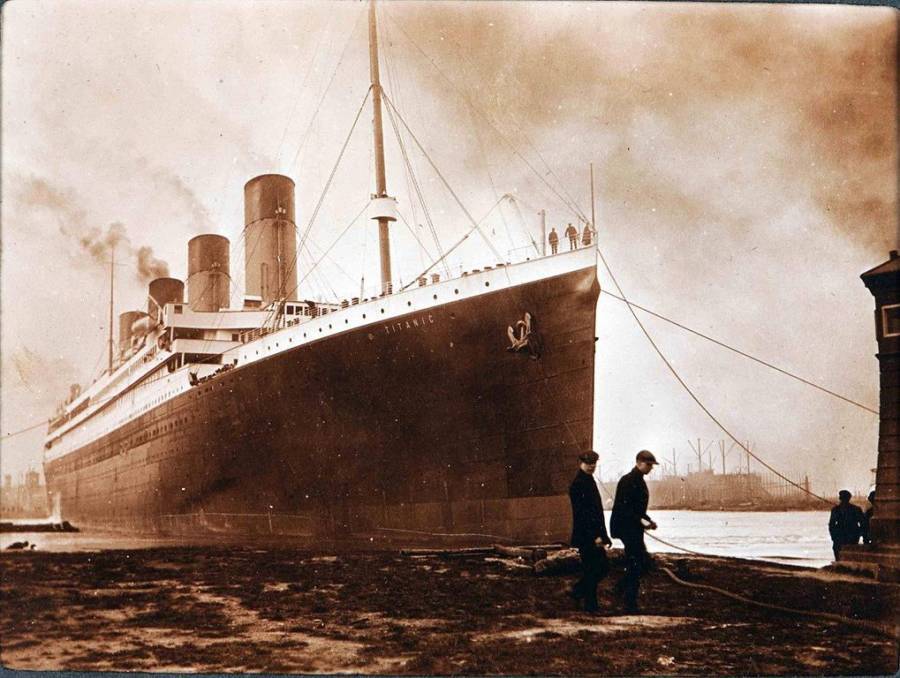
Wikimedia CommonsThe black streak can be seen just above the waterline, supposedly supporting the Titanic fire theory. Circa April 1912.
It’s a story we all know. On one fateful evening in 1912, the Titanic hit an iceberg, split in two, and sank into the depths of the biting waters of the North Atlantic, taking some 1,500 people with it.
But what if it wasn’t just the iceberg that did it? A new Titanic fire theory redirects some of the blame in this tragedy.

The Titanic’s Fateful Maiden Voyage Of 1912

ullstein bild/ullstein Bild | Getty ImagesCrowds gather on the docks as the Titanic prepares to set sail from Southampton, England, on April 10, 1912.
On April 10, 1912, the RMS set sail from Southampton, England, and headed across the Atlantic toward New York City.
A handful of millionaires settled into their luxurious cabins, while the common folk filled the lower decks, a class dichotomy immortalized in James Cameron’s epic film. All were excited to be on board this robust and impressive ship as it took off on its maiden voyage.
It was the largest ship of the time and so impressively constructed that it was hailed as unsinkable.

Universal Images Group | Getty ImagesThe luxurious first-class lounge on the Titanic.
But four days later, at 11:40 p.m., the “unsinkable” ship struck an iceberg south of Newfoundland. Less than three hours later, the Titanic was on its way to the ocean floor. Of the estimated 2,224 passengers and crew members, only about 700 survived.
The Titanic Fire Theory
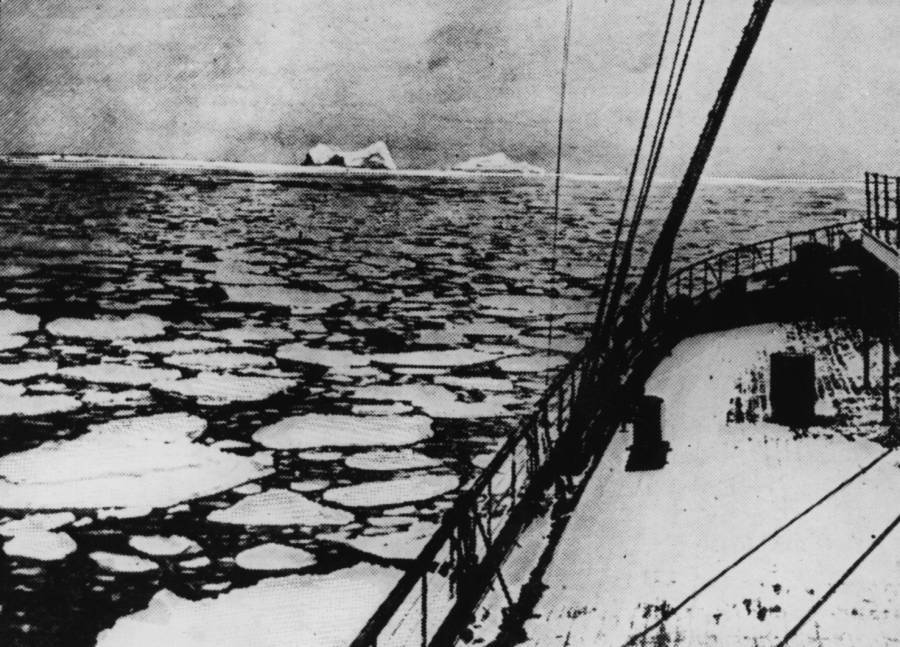
Hulton Archive | Getty ImagesA rare photograph shows the icy waters on April 4, 1912, just days before the Titanic sunk.
Since that fateful day just over a century ago, the public has remained fascinated by this unthinkable tragedy.
Most historians and marine experts have agreed that the iceberg was to blame for the Titanic sinking. Yet persuasive alternate explanations continue to emerge, the mystery only intensifying as the years go by.

Wikimedia CommonsThis photograph shows an iceberg that was suspected of being the one that sunk the Titanic. April 15, 1912.
The latest in a long line of revisionist theories was put forth by Irish journalist Senan Molony. In the 2017 documentary Titanic: The New Evidence, he argues that a fire contributed to the ship’s devastating fate.
His theory started in an attic, where a treasure-trove of long-lost photographs of the Titanic were collecting dust. A descendant of the director of the company that built the ill-fated ship found the breathtaking images and later sold them to Molony.
The photographs show the Titanic as it was being constructed in Belfast, Ireland, before it set sail. Molony says the pictures are so important that they are “the Titanic equivalent of Tutankhamun’s tomb.”
While Molony pored over the old album, he couldn’t help but notice a certain detail that fascinated him.
In one key image, shown in the video above, we see the Titanic leaving Belfast on April 2, 1912 (just over a week before it set sail from Southampton on its doomed maiden voyage). If you look closely, you can see a 30-foot-long black streak on the hull of the ship.
According to an analysis by engineers at Imperial College London, a fire that was raging in a coal bunker of the ship may have caused this damage, therefore weakening the ship before it even began its voyage.
Molony explains that the existence of the fire has been long documented, but its significance has been underplayed. He believes that the Titanic set sail despite the fire, and people who knew about it kept it quiet to avoid public scandal and a financial ruinous delay.
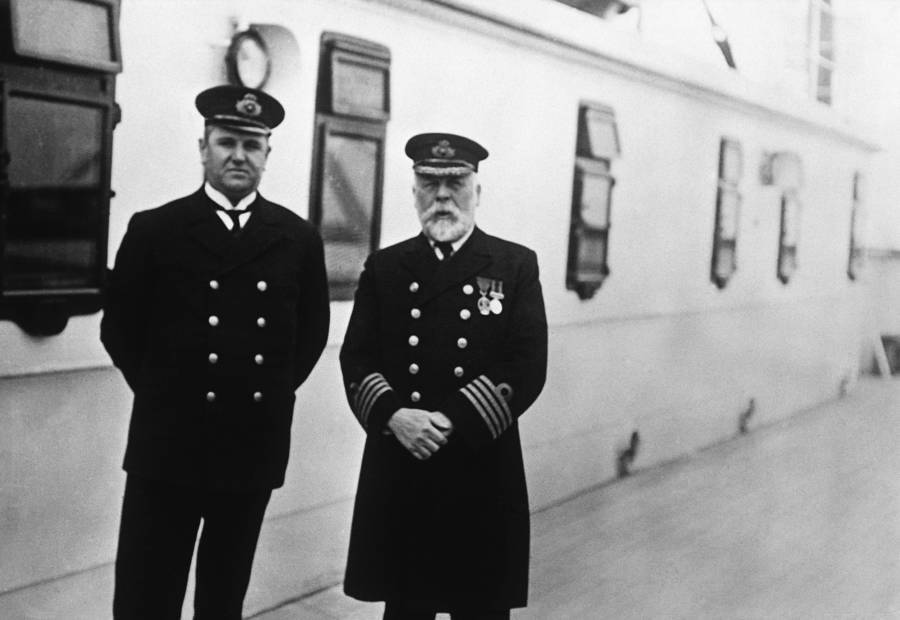
Ralph White/CORBID/Corbis | Getty ImagesCaptain Edward J. Smith and Purser Hugh Walter McElroy on the Titanic. They both went down with the ship.
Molony believes the crew tried to clear the burning coal bunker by moving it to the ship’s furnaces, making the ship itself go faster. And when the ship hit the infamous iceberg, it collided very close to the same already-weakened spot, causing the ship to sink faster.
So, the theory goes, the ship’s speed and the compromised structure both increased the impact of the iceberg against the ship during the collision, and therefore contributed to its sinking.
In the film, Molony declares, “It’s a perfect storm of extraordinary factors coming together: fire, ice, and criminal negligence… She should never had been put to sea.”
Support For The Titanic Fire Theory
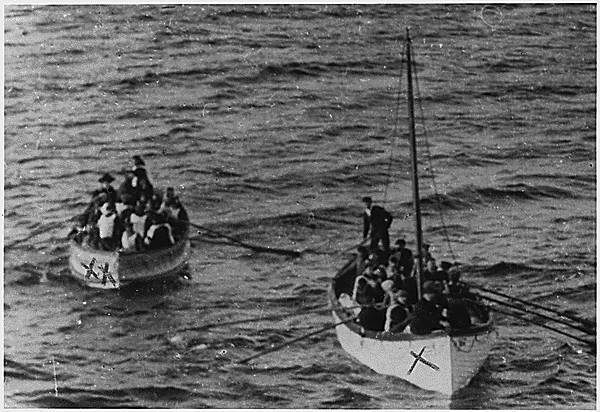
National ArchivesTwo lifeboats carry Titanic survivors to safety on April 15, 1912.
Beyond the photographs themselves, there are several contemporary eye-witness accounts that support the theory. Molony even points to an official inquiry made by British officials in 1912, in which a fire is mentioned but ultimately downplayed.
A crewman from the Titanic named Charles Hendrickson said in his testimony that the side of the ship was warped from the fire and he “brushed it off and got some black oil and rubbed over it” to mask the damage.
Another testimony from Frederick Barrett supports this. He confirms that the “bulkhead running through the bunker” was damaged by the fire, and that “the bottom of the watertight compartment was dinged aft and the other part was dinged forward.”
And according to an article published in the New York Tribune just a few days after survivors arrived on land, the fire was still blazing when the ship set sail from Southampton. “In my opinion, this fire played no small part in the disaster,” an anonymous officer of the ship claimed.
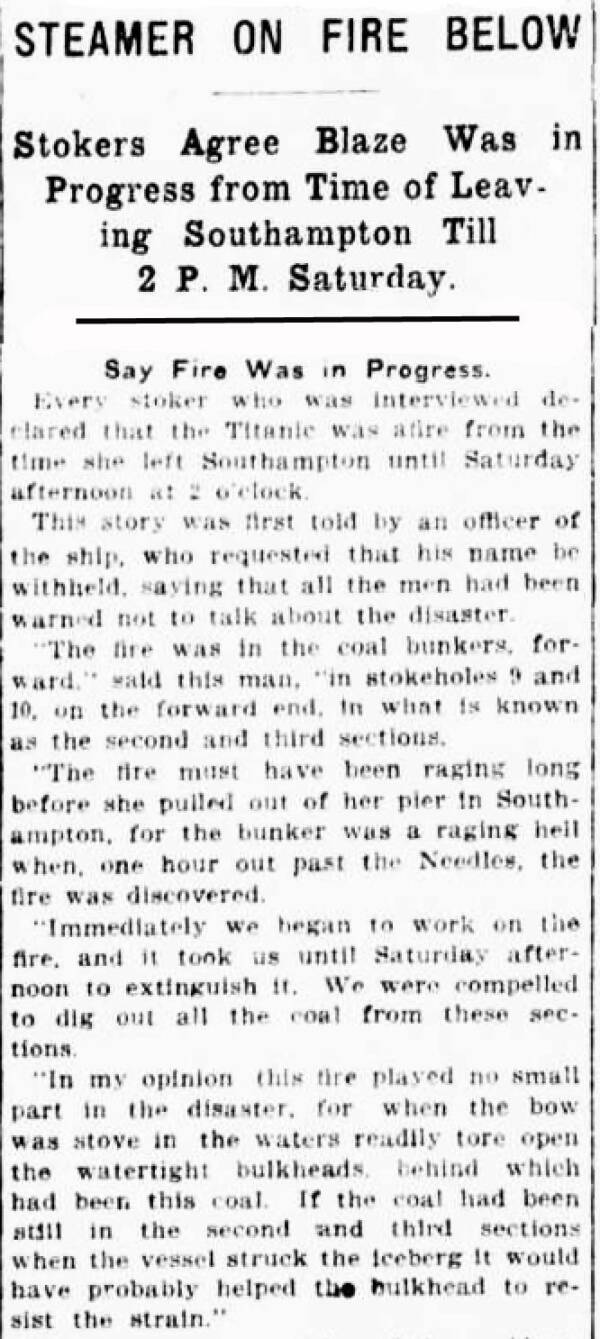
New York Tribune, via Senan Molony | SmithsonianIn this New York Tribune article, an officer of the ship claims that the fire contributed to the sinking of the Titanic.
Some experts today support the theory, such as a marine engineer named Richard de Kerbech. He agrees that the fire would indeed have damaged the ship’s bulkhead and made it more vulnerable to the piercing of the iceberg.
“This discovery is a revelation and could change our knowledge of the history of what happened,” he said.
Criticism And Consensus
But not everyone is convinced. Some skeptics brush aside this explanation as one of many conspiracy theories, ranging from the ridiculous (an Egyptian mummy cursed it) to the sinister (millionaire banker J.P. Morgan plotted the ship’s demise to bring down his enemies on board).
Regarding the role of the fire, David Hill, the former honorary secretary of the British Titanic Society, says that its significance is overplayed in this theory. He argues that while the fire may have accelerated things, “in my view, the Titanic would have sunk anyways.”
As with many historical mysteries, the full truth may be lost in the past. But the continued speculation and investigations serve as a testament to the very importance of this 20th-century disaster, which continues to fascinate the public and scholars alike to this day.
Next, discover the tragic stories of 12 Titanic survivors. Then take a look at 33 rare Titanic sinking photos, taken just before and after it happened.





